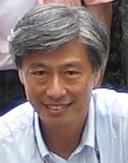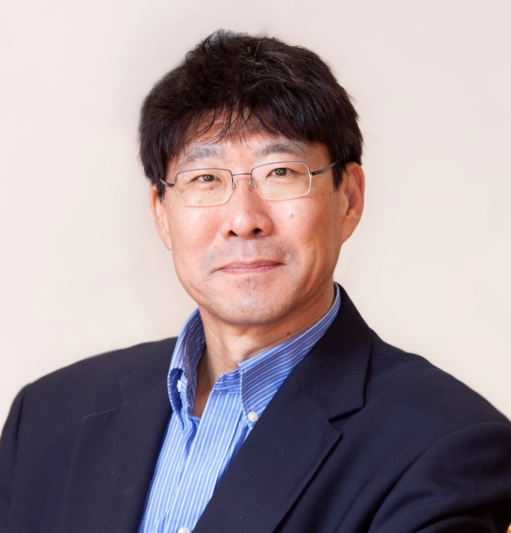1 Wenping Wang, 2023 Bézier Award Recipient
Wenping Wang has made most fundamental research contributions in several areas of geometric modelling and computing. Exemplary we mention his contributions to B-spline curve fitting, architectural geometry, centroidal Voronoi tessellation for mesh generation and intersection of quadric surfaces:
B-spline curve fitting is a fundamental task in shape modelling. Previous methods were slow and not robust, and there was no effective way to determine the optimal number of B-spline control points for fitting a given shape. Wenping’s research has drastically advanced the state of the art of B-spline curve fitting by proposing the squared distance minimization (SDM) method published in ACM Transactions on Graphics (ToG) in 2006. Now his SDM paper is the most cited paper for B-spline curve fitting.
Collaborating with Helmut Pottmann and others, Wenping contributed to architectural geometry with three papers at SIGGRAPH 2006, 2007, and 2008. These works addressed long-standing problems in design and fabrication of freeform architectural surfaces. His 2006 SIGGRAPH paper, entitled “Geometric modelling with conical meshes and developable surfaces”, is the first work on architectural geometry ever presented at SIGGRAPH.
Centroidal Voronoi tessellation (CVT) is an optimal geometric structure widely used for various geometric applications, especially for generating high-quality finite element meshes in numerical simulation. The previously prevailing Lloyd’s method is notoriously inefficient for large-scale meshes. Joint with Bruno Levy, Yang Liu and others, Wenping established the surprising result that the CVT energy function is in fact second-order smooth in general in the paper “On centroidal Voronoi tessellation — energy smoothness and fast computation” (ToG 2009). Based on this result, his paper proposed an efficient quasi-Newton method for computing the CVT with super-linear convergence. This method is now the most cited method in CVT computation.
Wenping made practical and theoretical contributions to computing the intersection of two quadric surfaces. Collaborating with Jiaye Wang and Myung-Soo Kim, Wenping pioneered an algebraic approach to collision detection of ellipsoids by proposing a simple and elegant algebraic method (CAGD 2001). His algebraic approach has inspired much follow-up research in both computer graphics and computational material science.
Wenping Wang chaired over 20 conferences, and has served on the editorial boards of 8 journals. He founded GMP as a premier international conference on geometric modeling in 2000, and played a key role in founding Asiagraphics Association for promoting research in computer graphics and geometric modelling in the Asia-Pacific region.
Wenping has been a co-chair of the International Geometry Summit 2019 and 2023. He has co-chaired several conferences in applied geometry, such as Advances in Architectural Geometry, CAD&CG, Dagstuhl Geometric Modelling Workshop, GMP, SIAM CAGD, SIGGRAPH Asia, SMI, SPM, and Pacific Graphics. He contributed as an associate editor to major journals such as CAGD, TVCG, CG&A, ToC, CGF, CVM, and C&G.
Wenping has given over 40 invited and keynote lectures. As primary supervisor, Wenping has supervised and graduated 45 Ph.D. students on thesis topics in geometric modelling. Wenping Wang is an IEEE Fellow (2017) and an ACM Fellow (2021). He received the John Gregory Award (2017) for his contributions in geometric computing and the Asiagraphics Outstanding Technical Contributions Award (2021).
2 Takashi Maekawa, 2023 SMA Fellow

Takashi Maekawa holds the position of Senior Researcher (Professor) at Waseda University Research Institute for Science and Engineering and a Professor Emeritus at Yokohama National University. Prior to his academic career, he gained practical experience as a product design engineer at Bridgestone Corporation. His research encompasses a diverse range of areas, including geometric modeling, additive manufacturing, NC machining, and the development of path planning algorithms for autonomous vehicles.
Dr. Maekawa is widely acknowledged as a pioneer in introducing a class of iterative methods for curve and surface fitting. These methods iteratively reduce the deviation between cloud points and curves/surfaces using simple geometric rules. The outstanding features of this approach lie in its versatility, ease of implementation, and seamless integration of geometric constraints within the iterative process. Furthermore, he has introduced a new concept known as the “3D QR code,” revolutionizing the way to integrate these codes onto freeform surfaces through direct 3D printing. This innovation boasts several compelling advantages. Notably, it eliminates the need for additional post-printing steps, streamlining the process. Moreover, unlike conventional methods requiring a mix of dark-colored and light-colored materials, the ingenious use of ambient occlusion through grooving eliminates the necessity for multi-colored materials. The demonstrations cover a wide variety of objects, ranging from mechanical parts and pharmaceutical tablets to heart-shaped chocolates.
Dr. Maekawa’s scholarly contributions extend to approximately 70 journal publications, and co-authored the book “Shape Interrogation for Computer Aided Design and Manufacturing.” Holding 15 patents, some licensed to industry, he has made a substantial impact on the fields of geometric modeling and design. He has served on the editorial board of the Computer Aided Design, JSME Mechanical Engineering Journal, and Journal of Computational Design and Engineering. He has also served on international conference program committees including Solid and Physical Modeling, Shape Modeling International, Geometric Modeling and Processing, and Pacific Graphics. He was one of the program chairs of the Solid and Physical Modeling 2018 conference.

